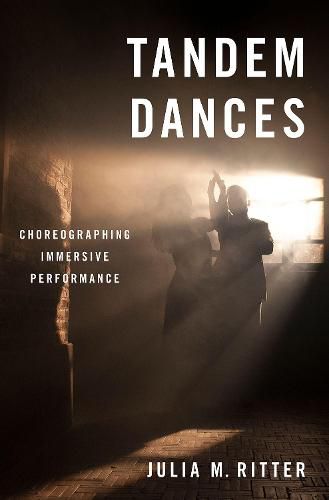Readings Newsletter
Become a Readings Member to make your shopping experience even easier.
Sign in or sign up for free!
You’re not far away from qualifying for FREE standard shipping within Australia
You’ve qualified for FREE standard shipping within Australia
The cart is loading…






Tandem Dances: Choreographing Immersive Performance is the first book to propose dance and choreography as frames through which to examine immersive theatre, more broadly known as immersive performance. Indicative of a larger renaissance in storytelling during the digital age, immersive performance is influenced by emerging computer technologies, such as virtual reality and advances in video-gaming, as well as increased interest in new forms of experiential entertainment. The idea of tandemness DL suggesting motion that is achieved by two bodies working together and acting in conjunction with one another DL is critical throughout the book. Author Julia M. Ritter persuasively argues that practitioners of immersive productions deploy choreography as a structural mechanism to mobilize the bodies of cast and audience members to perform together. Furthermore, choreography is contextualized as an effective tool for facilitating audience participation towards immersion as an affect. Through a focus on Western dance histories, theories, and practices, Ritter’s close choreographic analysis of immersive productions, along with unique insights from choreographers, directors, performers, and spectators, enlivens discourse across dramaturgy, kinesthesia, affect, and co-authorship. By foregrounding the choreographic in order to examine its specific impact on the evolution of immersive theater, Tandem Dances explores choreography as a discursive domain that is fundamentally related to creative practice, agendas of power and control, and concomitant issues of freedom and agency.
$9.00 standard shipping within Australia
FREE standard shipping within Australia for orders over $100.00
Express & International shipping calculated at checkout
Tandem Dances: Choreographing Immersive Performance is the first book to propose dance and choreography as frames through which to examine immersive theatre, more broadly known as immersive performance. Indicative of a larger renaissance in storytelling during the digital age, immersive performance is influenced by emerging computer technologies, such as virtual reality and advances in video-gaming, as well as increased interest in new forms of experiential entertainment. The idea of tandemness DL suggesting motion that is achieved by two bodies working together and acting in conjunction with one another DL is critical throughout the book. Author Julia M. Ritter persuasively argues that practitioners of immersive productions deploy choreography as a structural mechanism to mobilize the bodies of cast and audience members to perform together. Furthermore, choreography is contextualized as an effective tool for facilitating audience participation towards immersion as an affect. Through a focus on Western dance histories, theories, and practices, Ritter’s close choreographic analysis of immersive productions, along with unique insights from choreographers, directors, performers, and spectators, enlivens discourse across dramaturgy, kinesthesia, affect, and co-authorship. By foregrounding the choreographic in order to examine its specific impact on the evolution of immersive theater, Tandem Dances explores choreography as a discursive domain that is fundamentally related to creative practice, agendas of power and control, and concomitant issues of freedom and agency.